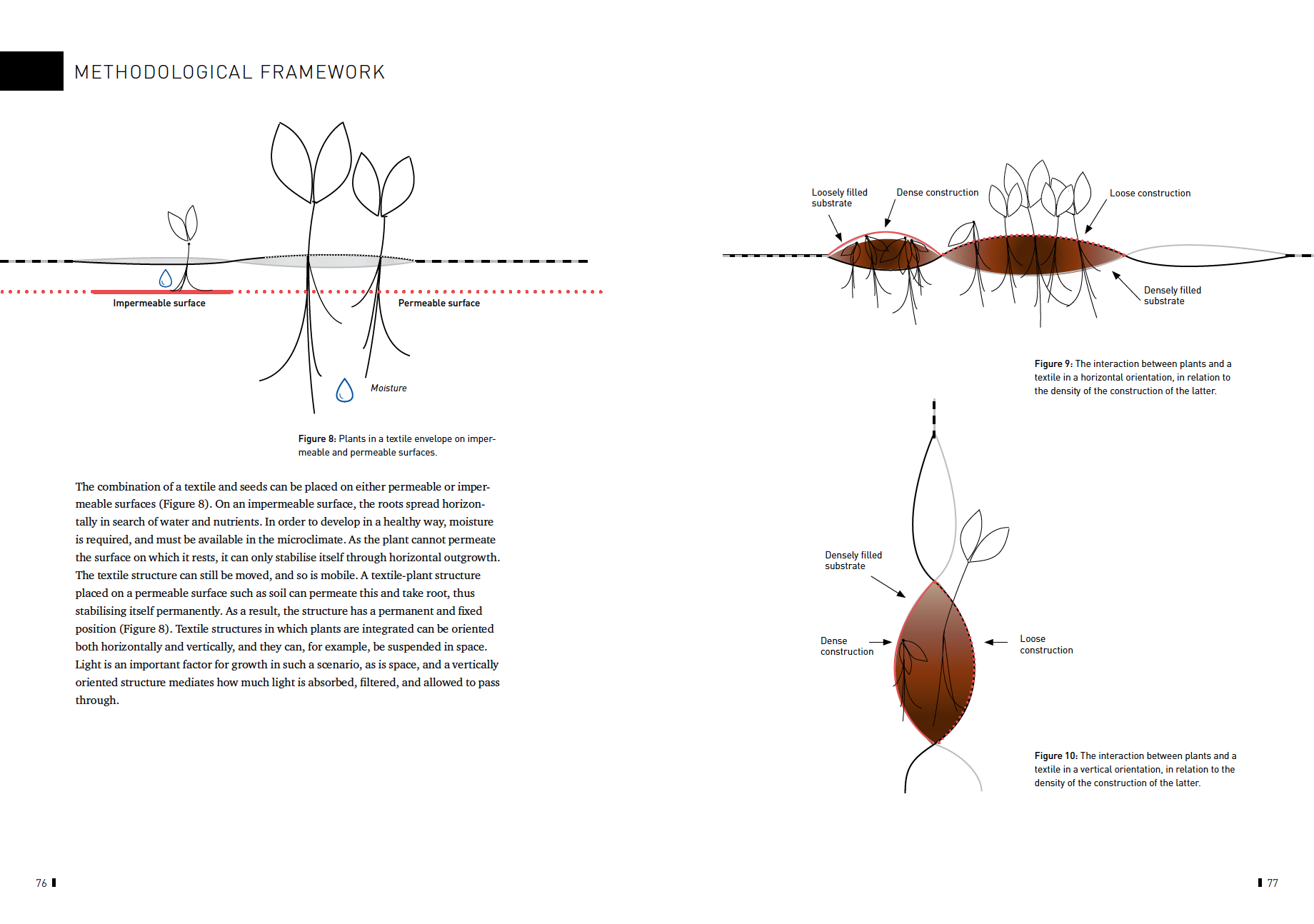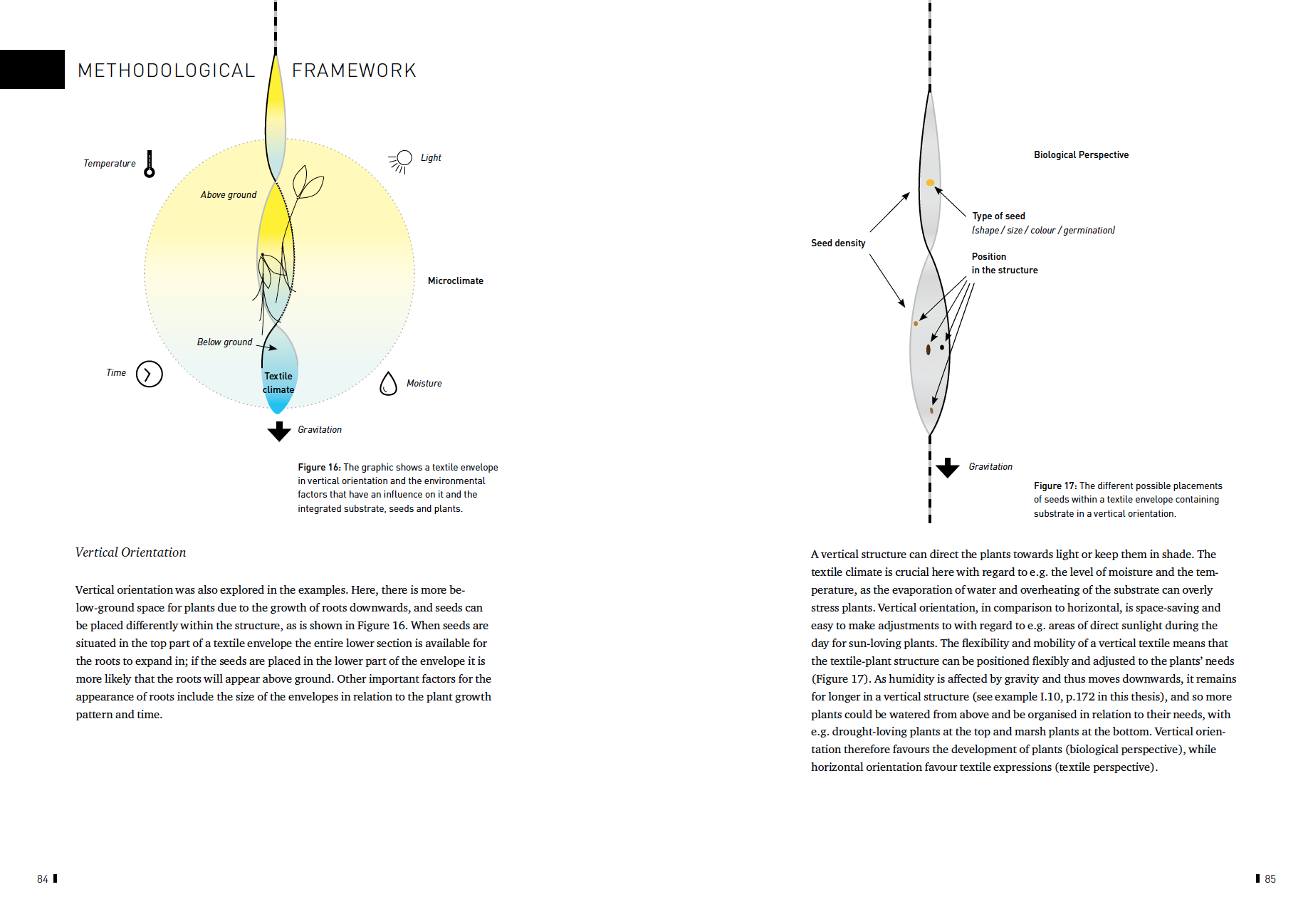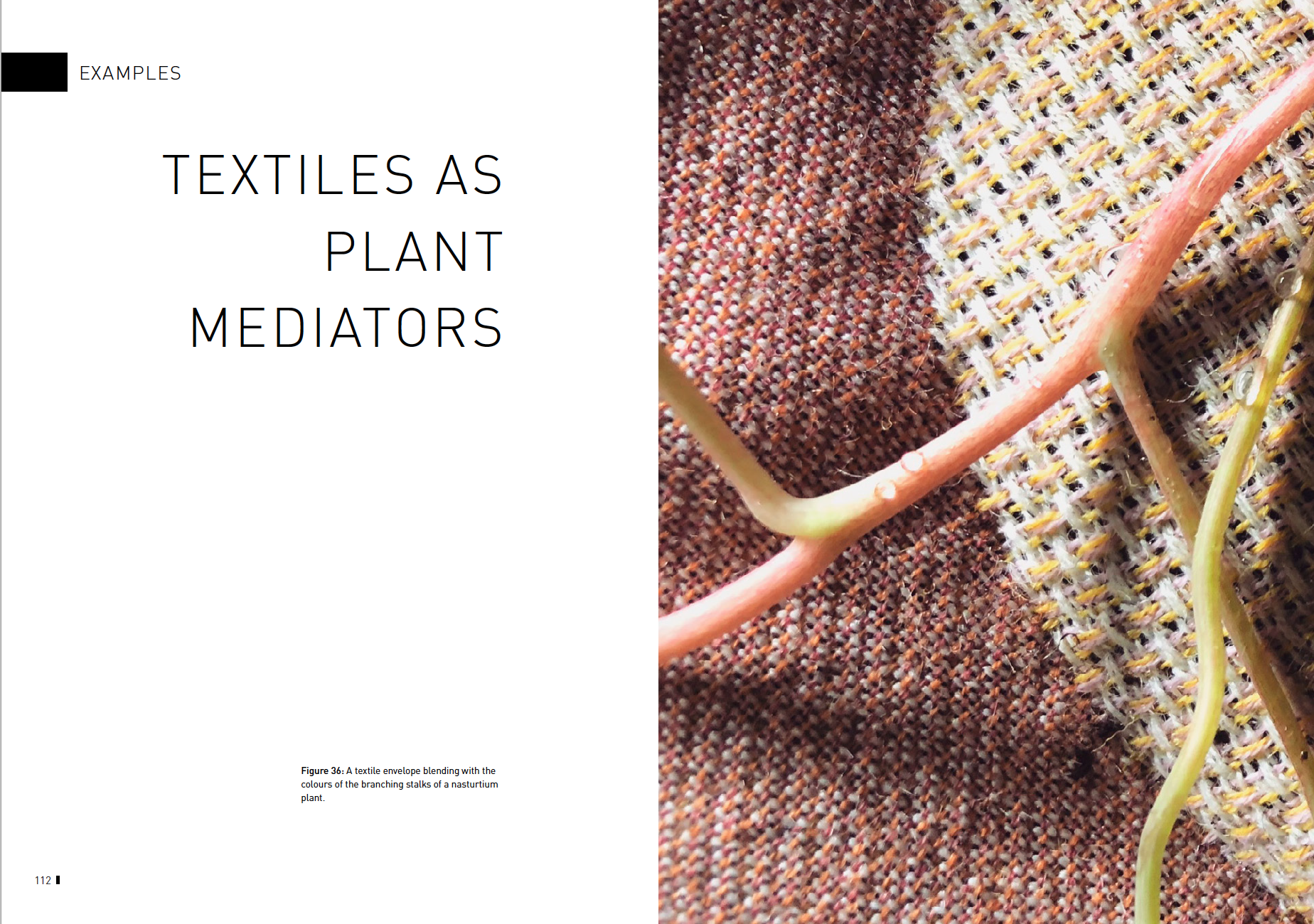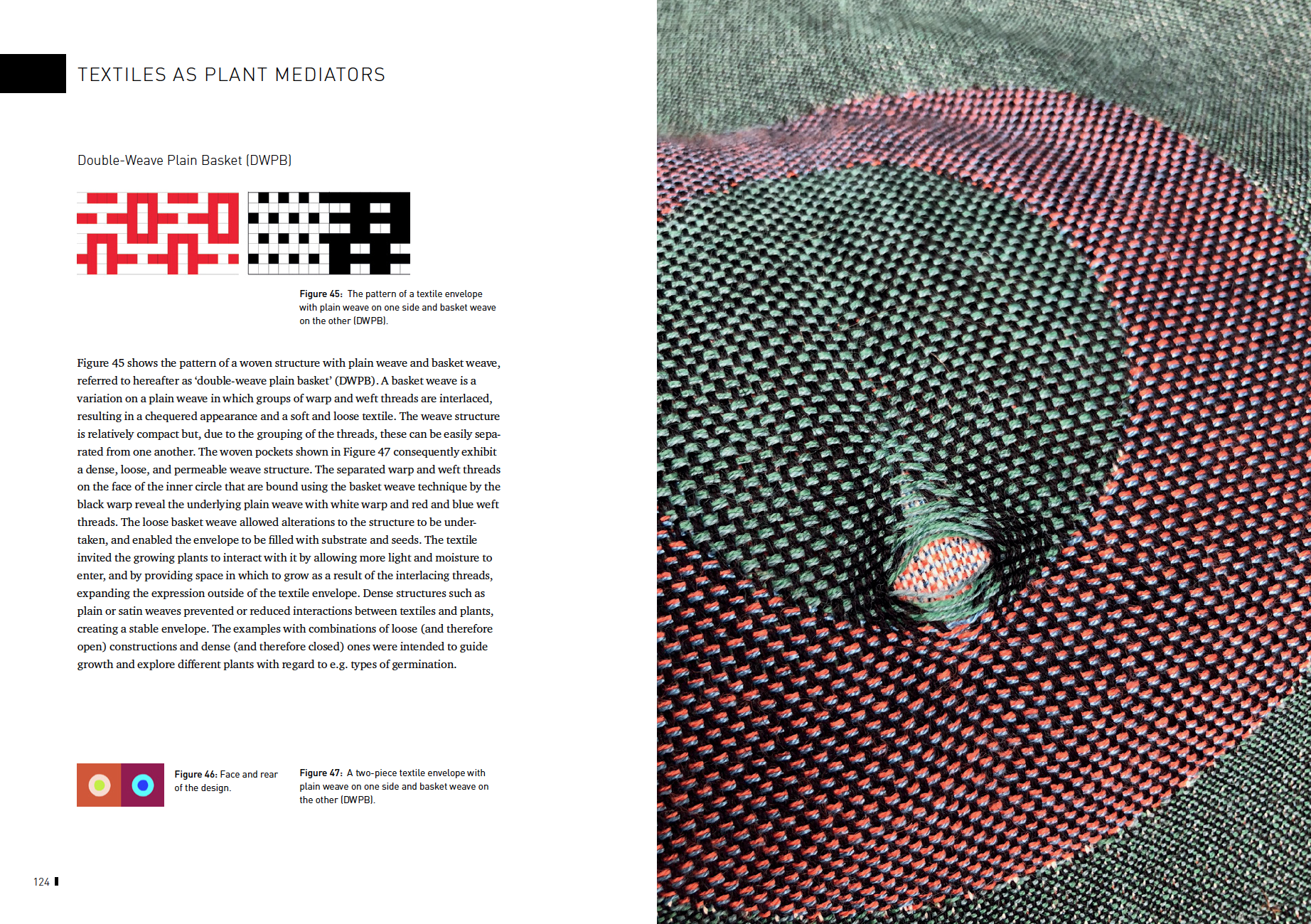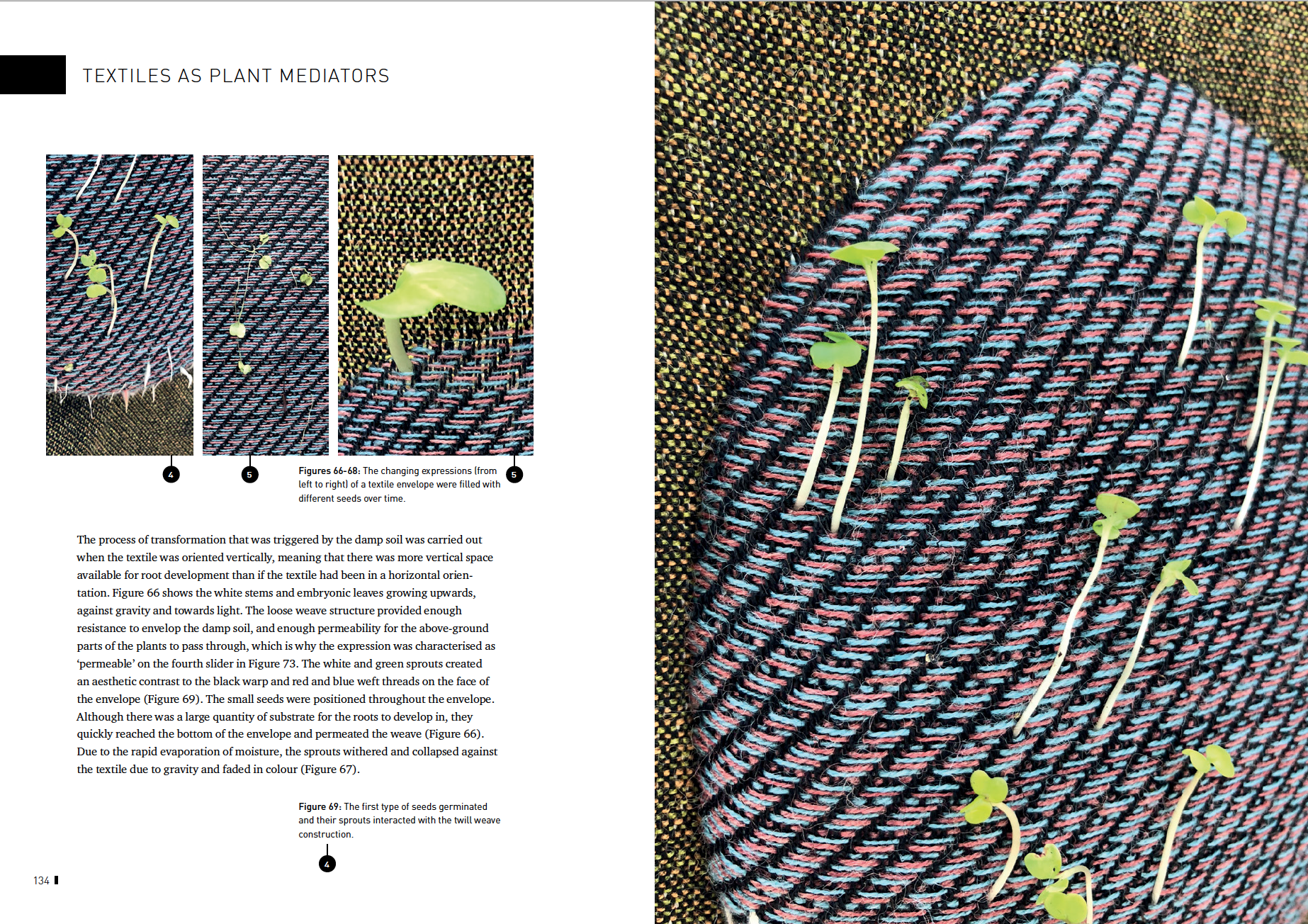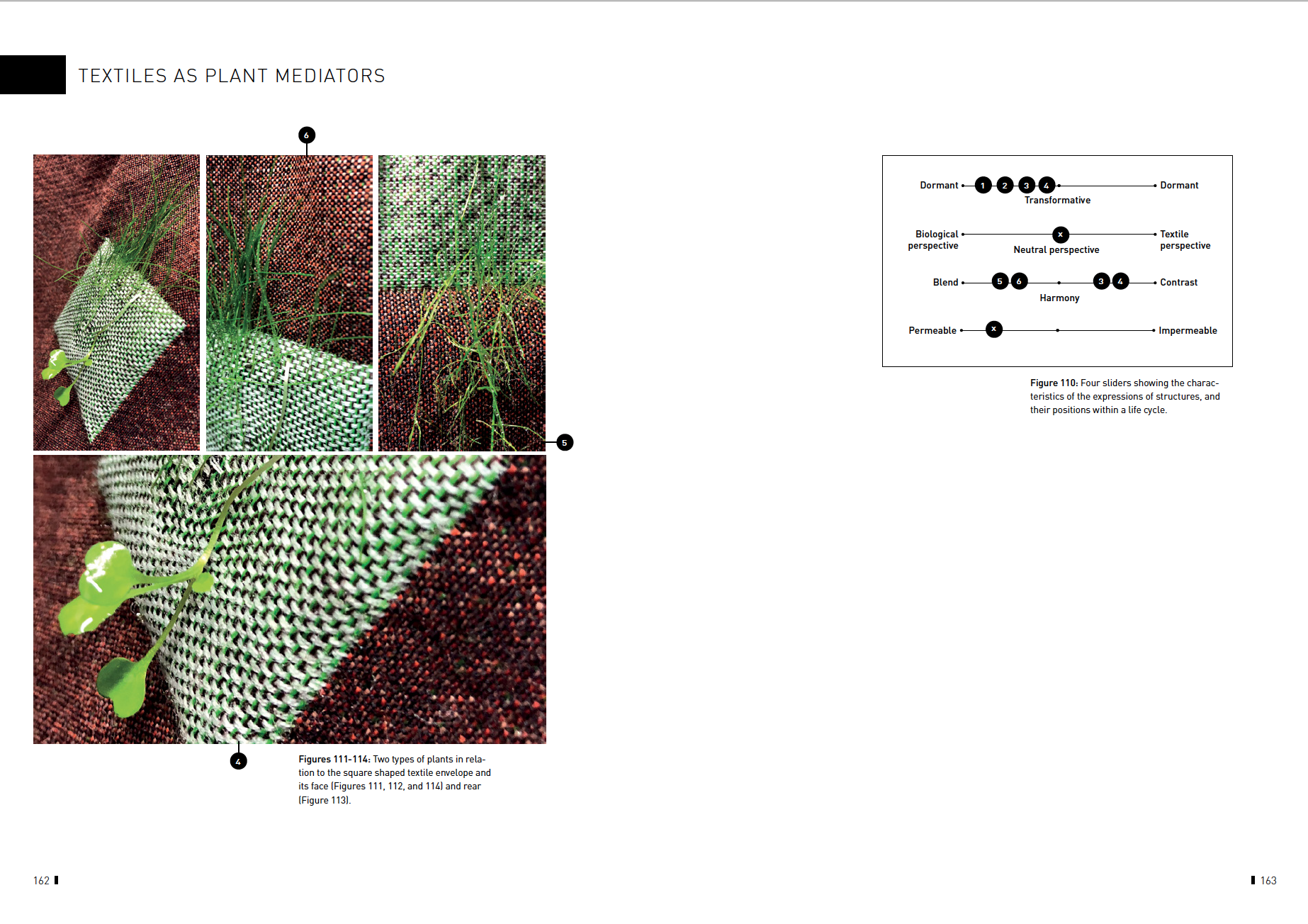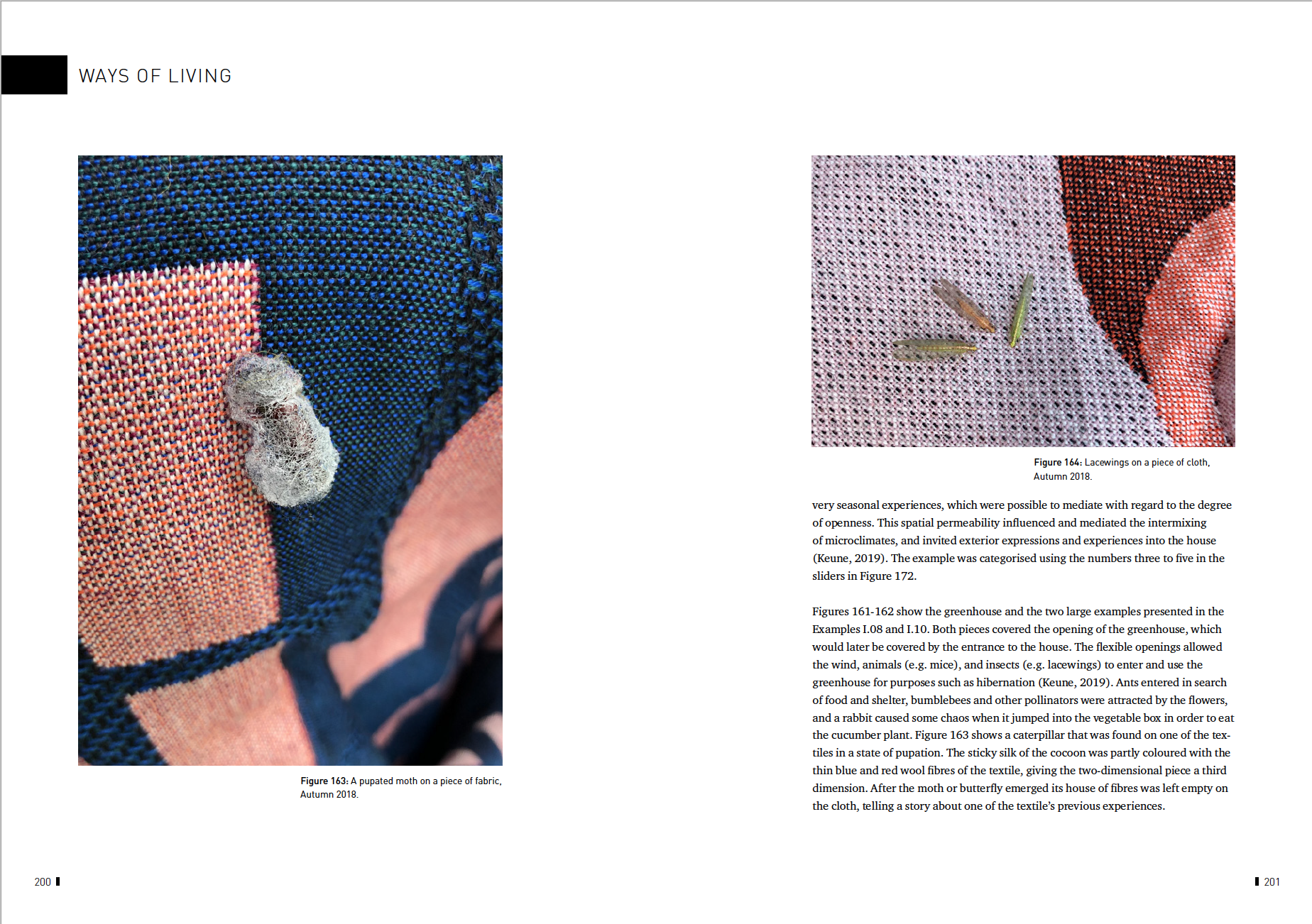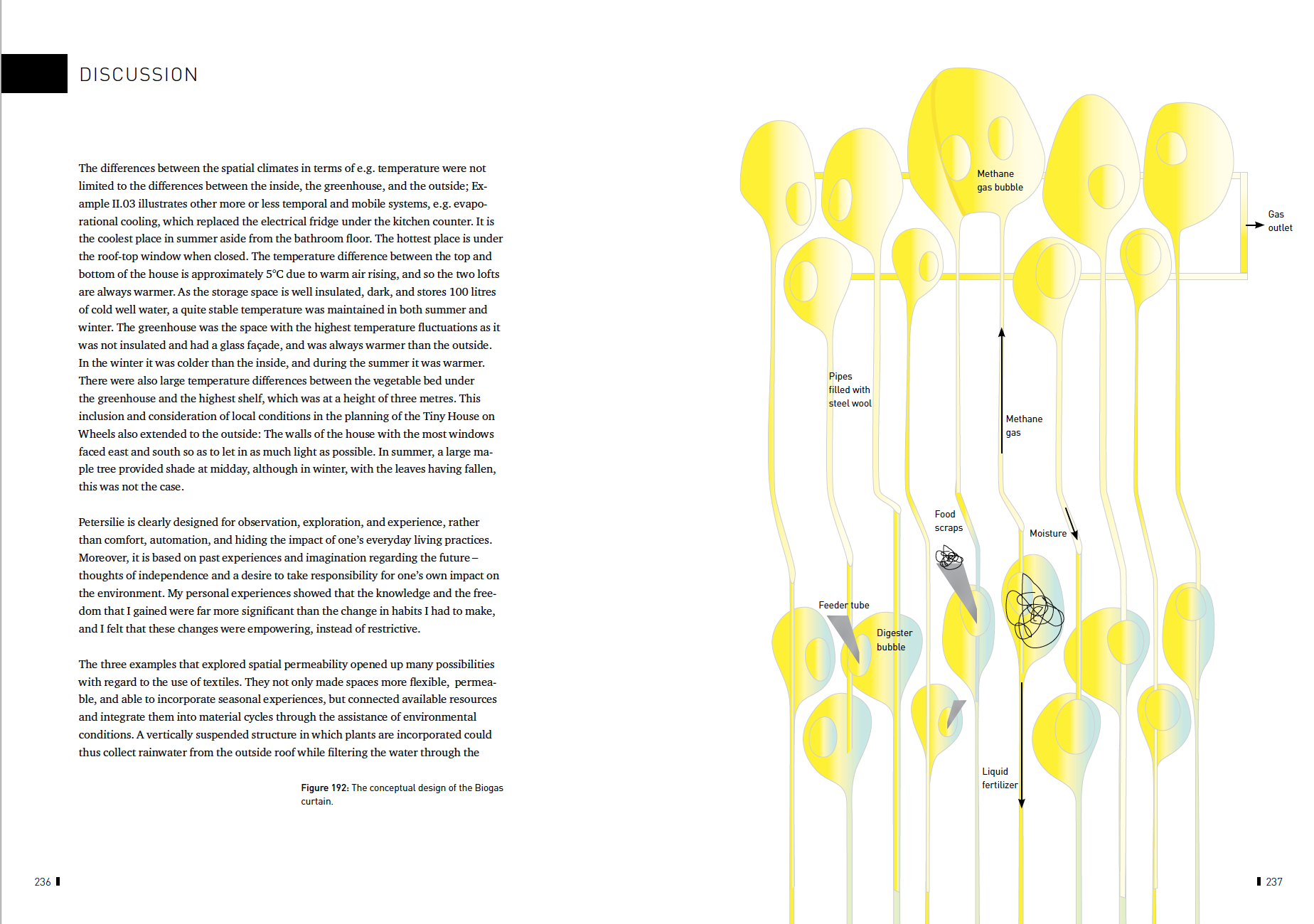2019 PhD Thesis
On Textile Farming: Living Indoors
Perspectives to Designing Textiles and Living with Plants
‘On Textile Farming’ presents a framework which relates two design perspectives, the textile and the interior:
Firstly by – Designing Textiles by Accommodating Plant Growth
Secondly by – Suggesting A Way of Living between the inside and the outside
The result of my work is a conceptual and methodological framework for textile design and a novel way to consider plants and environmental factors when designing interiors. Both design perspectives contribute to strengthen and re-establish the connections between interior and exterior spaces, the built and our “natural” surroundings. The 6 concepts of the framework are closely interlinked. Textile climates influence spatial climates through humidity, shade etcetera, seasonal textiles lead to seasonal interiors and whereas textile permeability enables interactions with plants, spatial permeability enables interactions with seasonal experiences and expressions. In textiles and architecture, every action is concentrated on the rapid completion of the structure – the end of the fabrication or building process, and the start of functionality. For the last few centuries, ideal forms of architecture have been independent of time and processes of decomposition, and the same can be said of interior textiles and interiors in general. In Architecture however we can see a shift towards living materials – and we need perspectives of how to live in such structures. A huge design space is opening up here which has to be further explored and developed. Living with plants and in a prototype was my way of exploring this space. I propose a higher diversity of living environments and practices so that alternatives can be developed and explored and to enable people to design their own ways of living and social learning processes in relation to rethinking comfort and sustainability. In the discussion chapter of my thesis I propose a range of improvements for the textile structures and argue that there is a lot more to explore at the intersection of textiles and plants. Textiles could support a plants basic requirements but also its natural microbiome and symbioses with other species. Microbiomes are a key factor in the health and activity of plants, and have gained considerable attention in recent years. Such a textile system could accommodate beneficial bacteria and insects as a result of the use of pheromones and visual patterns, which attract them and the predators of pests. Textiles as mediators between the inside and the outside drastically challenge the current ideal of the interior as a space with clear boundaries between inside and outside expressions and experiences. But I think that in order to learn how to live in harmony with our environment we have to bring it back into our homes and provide perspectives of positive change.
You can download the publication via the following link: Textile Farming: Living Indoors




